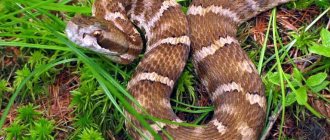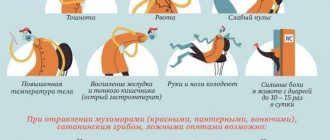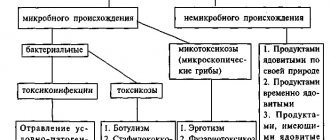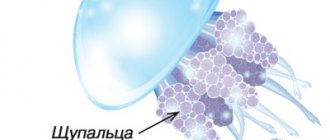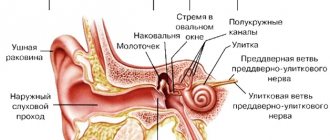Clinical manifestations
The highest quality medical care is provided in cases where the patient or others have managed to notice what type of reptile has caused dangerous damage. This will allow you to outline a further treatment program with increased chances of success.
But even despite the fact that there are quite a lot of dangerous scaly representatives on the territory of the post-Soviet countries, they have a number of common signs of defeat. This is explained by the fact that the components of snake venom almost always contain components similar in their spectrum of action.
In short, neurotoxins become the basic elements of aggressive environments towards the victim’s tissue. Their main task is a destructive effect on nerve structures.
The second component is called hemolysin. Its distinctive feature is the provocation of the breakdown of healthy red blood cells and other blood cells. Cardiotoxin completes the depressing picture. As the name implies, it negatively affects the functioning of the heart muscle and the cardiovascular system as a whole.
Cholinesterase is no less dangerous. This is the name for an enzyme that is designed to destabilize natural neuromuscular transmission.
But sometimes the standard set can be supplemented with some specific components, which is more suitable for rare exotic species that are found in the jungle.
Looking at the main symptoms of anxiety, they can be sorted into four broad categories, including:
- local manifestations;
- general manifestations;
- cardiac disorders;
- neurological disorders.
The first point covers signs that are relatively easy to detect during the initial examination of the patient and questioning regarding his current condition. At the site of the suspected lesion, two triangular-shaped teeth marks will be visible, located at the same level in relation to each other. The distance between the wounds is from 2 to 3 mm, depending on the specific type of reptile.
Unlike ticks, snakes almost never release an anesthetic enzyme when venom is directly injected. This means that the person will instantly experience intense burning and soreness at the site of the bite.
Next, the following will increasingly manifest themselves:
- redness and then bluishness of the skin at the site of the bite;
- pronounced swelling;
- dark spots, sometimes accompanied by blisters;
- bleeding from the bite site.
At the same time, problems begin with the functioning of the cardiovascular system. If at this moment you take measurements of the heartbeat, then everything will indicate classic tachycardia with a number of beats under 120 units.
Additionally, the victim will face the consequences of a sharp drop in blood pressure, rapid breathing and pain in the chest area. All of the above is especially dangerous if the injury was caused to a child.
Neurological disorders include:
- muscle weakness;
- headache;
- clouding of mind;
- reduced visual acuity;
- double vision;
- inability to focus;
- inability to swallow something normally;
- paralysis of facial muscles and facial asymmetry;
- drooping eyelids.
The general neurological disorder ends with numbness of the entire body.
Against the backdrop of all of the above, hemorrhages and a rapid increase in temperature become standard reactions of the body. If you don’t know what to do from the very beginning, then within the first half hour the victim will experience bloody vomiting and diarrhea. The clinical picture will be complemented by progressive hepatic-renal failure.
Prevention
- Don't provoke the snake! The snake is a peace-loving animal and will never attack itself.
- Don't step on the snake, be careful and watch your step.
- When you see a snake, do not scream or make sudden movements.
- When entering a potentially hazardous area, wear high boots and thick clothing.
- Before walking through thick, tall grass, make sure there are no snakes there. Use a stick or other available means.
- Choose a suitable place to stay overnight. It is better if it is a hill with sparse and low vegetation, away from rocks and holes.
- Don't leave tents open.
- Before getting into your sleeping bag, check for snakes.
Features of symptoms
In order for first aid to really help alleviate your well-being, it is extremely important to determine the severity of the symptoms of the lesion. This means that even if in the first minutes after the bite a person still feels relatively normal, this does not mean that he is fine.
For pre-medical therapy, you will have to take into account not only the type of snake, but also its size and age. Often, people from the post-Soviet space have to deal with a rather narrow list of poisonous reptiles, the “popularity” rating of which is headed by vipers.
It is believed that the most dangerous varieties are:
- rattlesnakes;
- cobras;
- asps.
Do not assume that small and young individuals pose less of a threat. Experts, on the contrary, consider them more dangerous, especially taking into account their ability to produce huge amounts of poison during severe fright.
Also, the location of the wound will influence the degree of damage. Most often, the limbs of such animals are targeted, which gives the patient a slight head start. But if there is damage to the neck, face, torso with dangerous proximity to the location of large vessels, then the situation worsens.
In addition to the age of the aggressive animal, it is worth considering the age of the victim itself and its health. The worst sufferers of poisons are the elderly and children. The presence of various chronic diseases accelerates the spread of toxins.
It is worth paying attention to behavior immediately after the injection of toxic substances. The more intensely the patient moved, the faster the enzymes spread throughout the body. It is not for nothing that the first measures of assistance include the need to give the victim the most comfortable, motionless position.
Another cause for concern may be the infection of a snake's tooth wound by pathogenic microorganisms after a bite. Such pathogens quickly generate the launch of purulent-necrotic processes that aggravate the general condition.
Depending on all of the above aspects, the course of the pathology can occur either smoothly, step by step, or abruptly or abruptly. If it is impossible to provide the necessary assistance in a short time, the person usually dies of shock. To prevent death, immediately after detecting characteristic triangular marks on the skin, you should immediately go to the hospital.
What determines the severity of the bite?
- The body weight of the victim, the smaller the weight, the more severe the reaction to the bite. Snake bites are especially difficult for small children.
- State of health (presence of concomitant diseases);
- Place of the bite (bites on the neck and head are more dangerous, as well as when the bite falls on a blood vessel);
- The higher the air temperature, the faster the symptoms of intoxication develop;
- Size of the snake (the larger the snake, the more venom it has);
- The amount of poison injected. Sometimes it happens that a bite can be completely harmless and contain no poison. This situation can occur if the snake has recently used poison and it has not yet had time to develop. The viper's venom accumulates gradually.
Distinctive features of common snake bites
The rules for providing hospital care provide for the need to figure out what type of reptile caused the injury. This will be required to improve the effectiveness of subsequent therapy. Because of this, it is worth paying attention to both the characteristics of the snake itself and the course of the lesion.
In most cases, people have to deal with toxic reactions of a general nature, which is inherent in weakly poisonous representatives of the fauna. Doctors will have to deal with extensive purulent wounds at the site of the lesion, using multi-stage antitoxic therapy.
But on vacation in exotic countries, many have to deal with more cruel snakes, poisons that destroy blood cells, provoking the onset of flaccid paralysis of the transverse muscles. The respiratory muscles also suffer from the components.
The worst is for those who have encountered royal asps. Despite the fact that their bite is not accompanied by significant pain, after a couple of minutes the victim feels numbness, and then paralysis. In the absence of adequate response measures, death occurs very quickly.
In second place on the list of the most common snake bites is the cobra, which even bites very painfully. With such a lesion, extensive hemolysis of red blood cells comes to the fore with the subsequent development of hemolytic anemia and jaundice. The clinical picture is complemented by liver failure. Any neurotoxic reactions are of a secondary nature, which aggravates the course of the process and the general condition.
The top three “leaders” are rounded off by pit vipers and rattlesnakes. Even immediately after the bite, the victim experiences severe burning and pain. Next comes:
- swelling, covering even areas distant from the lesion;
- bruising;
- blisters that gradually merge into general necrotic wounds.
All this results in a hyperthermic reaction with a hectic rise in body temperature, chills, and intoxication, which is expressed in nausea and vomiting. The likelihood of internal bleeding localized in the gastrointestinal tract increases.
How to assess the severity of poisoning?
| Snakes | Severity of poisoning | Pain | Edema | Bloody blisters | Tissue destruction (necrosis) | Muscle twitching | General signs |
| Vipers and pit vipers | Lightweight | Local and only in the first hours after the bite | Slight in the bite area | No | No | No | In rare cases, slight shortness of breath and palpitations in the first hours after the bite |
| Average | Burning | expressed | Rarely. When applying a tourniquet - often; | rarely | No | Shortness of breath, palpitations, rarely nausea and fever, circulatory disorders | |
| Heavy | Burning with spread | Sharply expressed, extends to the entire limb or part of the body | often | often | No | Drowsiness in the first hours, shortness of breath, palpitations, nausea, vomiting, impaired liver and kidney function, severe circulatory disorders. | |
| Adders and sea snakes | Lightweight | Local pain 1-2 hours after the bite. | rarely | No | No | No | A short-term feeling of stiffness and loss of sensitivity in the affected limb. |
| Average | Same | rarely | No | No | Weak, quickly passing, tremor of the eyelids and fingers | General weakness, feeling of numbness and stiffness of the affected limb, dysfunction of the lower limbs. | |
| Heavy | Uncertain in nature with distribution throughout the body. | minor | No | No | Severe, especially in the extremities, muscle spasms of the fingers | Lethargy, drowsiness, dizziness, nausea, vomiting, difficulty breathing, paresis and paralysis of the limbs, lips, tongue, blurred vision. | |
What not to do
REMEMBER!!! Do not make incisions (cauterization) of the wound. Do not suck out the wound contents. Do not apply a tourniquet. Wait for the doctor to arrive.
As a last resort, if the victim is in the forest and the wait for help is more than two hours, the contents of the wound can be sucked out with a rubber bulb for 30-60 minutes.
What not to do
What to do
What to do if bitten by a snake
Recommendations of the Ministry of Emergency Situations Photo: vk.com/mchsgov
- Calm the victim;
- Call an ambulance;
- Give the body a horizontal position, prohibit movement and speech;
- If the snake is fixed at the site of the bite, it must be carefully removed, killed, then placed in a separate container for further examination by specialists;
- Free the victim from restrictive clothing and jewelry;
- Immobilize the limb with available materials (boards, branches) with fixation of the adjacent joint. In the absence of available means, immobilization is carried out to a healthy limb or to the body.
- Treat the bite site with peroxide. Apply a bandage slightly above the bite site or any clean piece of fabric (one finger fits freely under the bandage);
- Give the person to drink as much fluid as possible;
- Take a tablet of Suprastin, Tavegil, Zyrtec, Zodak. (antiallergic drugs)
- If the heart stops or there is no breathing, begin artificial ventilation or cardiopulmonary resuscitation.
Help with a snake bite
